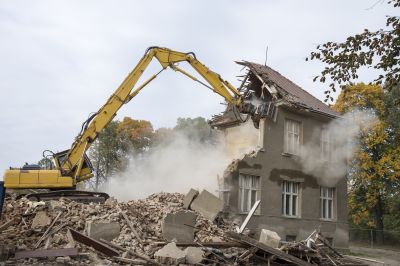Optimal Timing for Demolition Services
Determining the best time for demolition service depends on various factors including weather conditions, project scope, and local regulations. Typically, favorable weather with minimal rain and moderate temperatures ensures safer and more efficient demolition activities. Planning during periods of low occupancy or when construction projects are paused can also minimize disruptions.
Demolition is most effective during dry, mild weather conditions to prevent delays and safety issues.
Aligning demolition with project timelines helps avoid conflicts with ongoing construction or renovations.
Timing must adhere to local permits and regulations, which may influence scheduling.
Spring and fall often provide optimal weather for demolition projects in Lockport, NY.

Heavy machinery preparing for a demolition project.

A site being cleared in Lockport, NY.

Workers safely tearing down a structure.

Ways to make Demolition Service work in tight or awkward layouts.

Popular materials for Demolition Service and why they hold up over time.

Simple add-ons that improve Demolition Service without blowing the budget.
| Factor | Recommendation |
|---|---|
| Weather Conditions | Schedule during dry, mild weather |
| Project Scope | Coordinate with project timelines |
| Local Regulations | Ensure compliance with permits |
| Seasonality | Optimal in spring and fall |
| Community Impact | Choose less busy times |
Demolition services involve the systematic dismantling of structures, often requiring specialized equipment and skilled operators. Proper timing can enhance safety, reduce costs, and improve project efficiency. In Lockport, NY, seasonal weather patterns and local regulations influence optimal scheduling, making careful planning essential. Advances in demolition technology have increased safety standards and minimized environmental impacts, allowing for more flexible scheduling options.
Statistics indicate that scheduling demolition projects during favorable weather windows can reduce delays by up to 30%. Proper planning also helps in managing waste disposal and recycling efforts, which are critical components of modern demolition practices. Understanding local conditions and project requirements ensures that demolition activities are completed efficiently and safely.

A large structure being safely dismantled.

Heavy machinery prepared for project execution.

Materials being sorted for recycling.

Workers using safety gear during demolition.
Interested parties seeking demolition services are encouraged to contact for detailed planning and scheduling assistance. Proper timing ensures safety, efficiency, and compliance, making it a crucial aspect of any demolition project.
